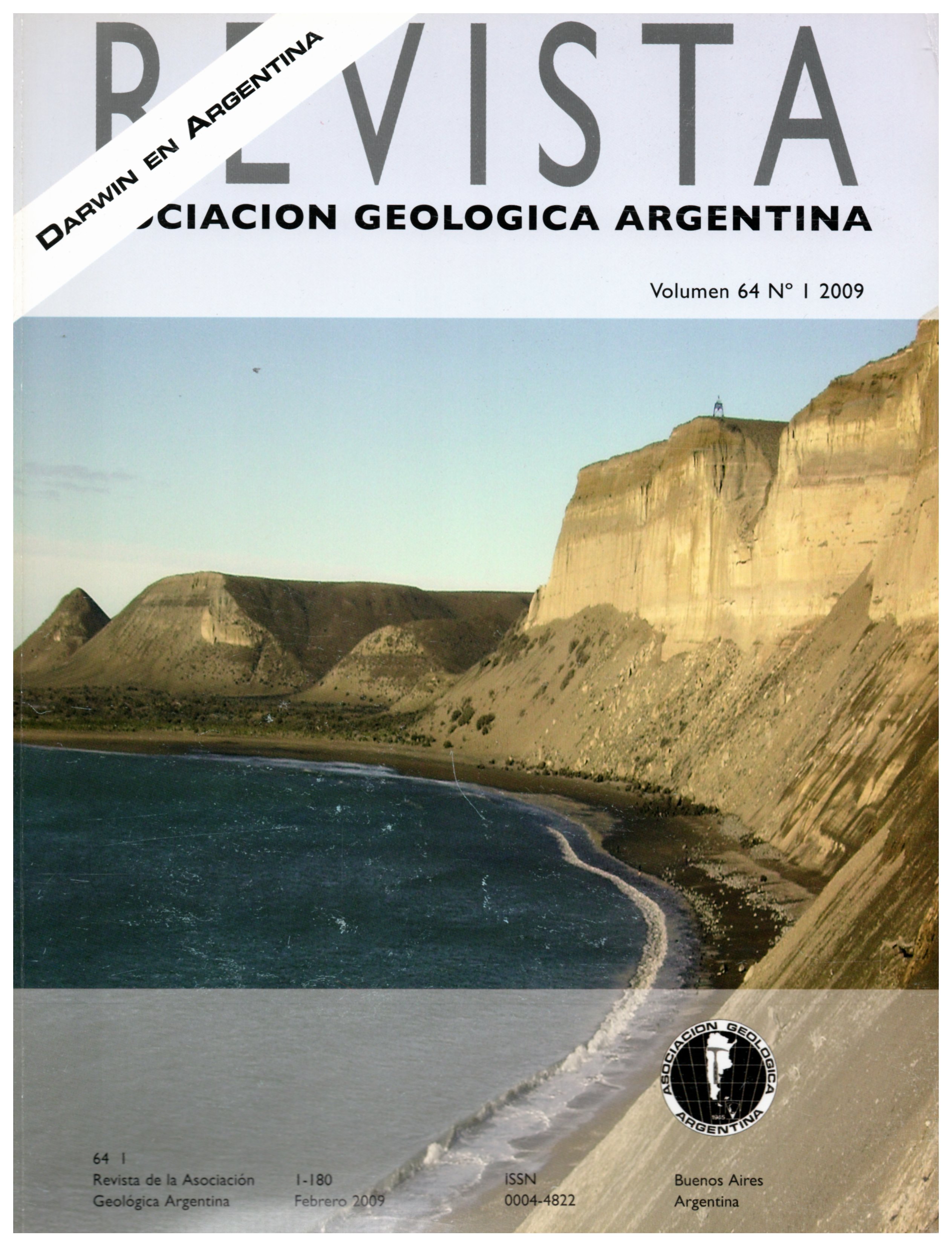Charles Darwin and the oldest glacial events in Patagonia: the erratic blocks of the Río Santa Cruz valley
Main Article Content
Abstract
Although the depositational environment assigned by Darwin to the large erratic blocksand gravels in the Río Santa Cruz valley has been reinterpreted, his geomorphological and stratigraphic observations are still in force. The large erratic blocks he described as crowning the Condor Cliff terrace and spread atthe bottom of the valley just east of this locality (Sites 2 and 3), are now interpreted as indicators of the maximum glacial expansion in Patagonia.Similar blocks, though of a different lithology, accumulated over a lower terrace located up-valley (Site 4), are now linked to moraines and glacifluvial terraces of the Penultimate Glaciation. Finally, in addition to the erratic block discovered by Darwin in the lower Río Santa Cruz valley (Site 1), there are others - recently discovered - which probably account for a catastro phicevent ascribed to a big glacier-lake outburst during the last interglacial.
Article Details

This work is licensed under a Creative Commons Attribution-NonCommercial 4.0 International License.
Nota de copyright
Los autores conservan los derechos de autor y garantizan a la revista el derecho de ser la primera publicación del trabajo licenciado según una licencia de atribución Creative Commons que permite a otros compartir el trabajo con el reconocimiento de la autoría y de la publicación en la que se publicó por primera vez.
Declaración de privacidad
Los nombres y direcciones de correo electrónico introducidos en esta revista se usarán exclusivamente para los fines declarados por esta revista y no estarán disponibles para ningún otro propósito u otra persona.

